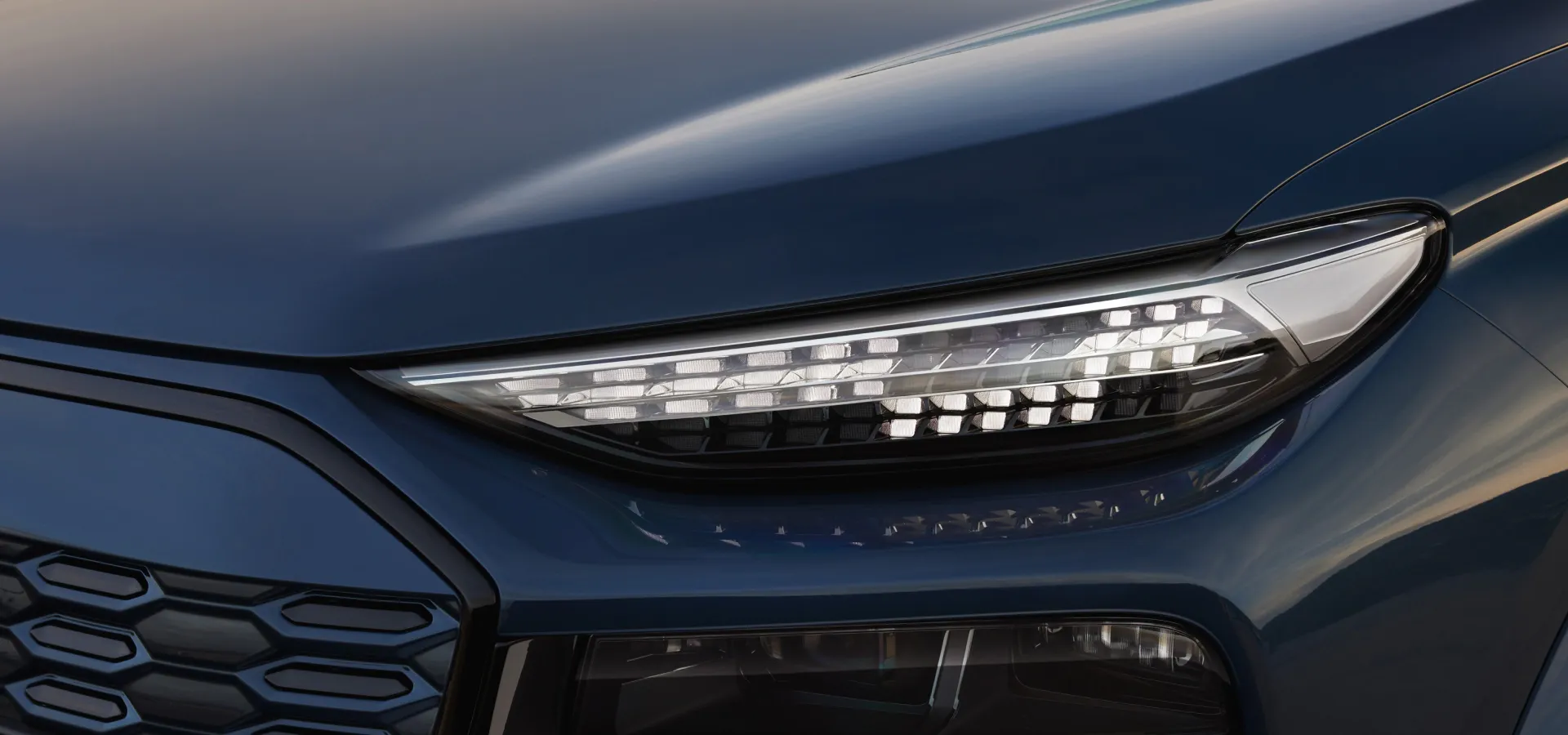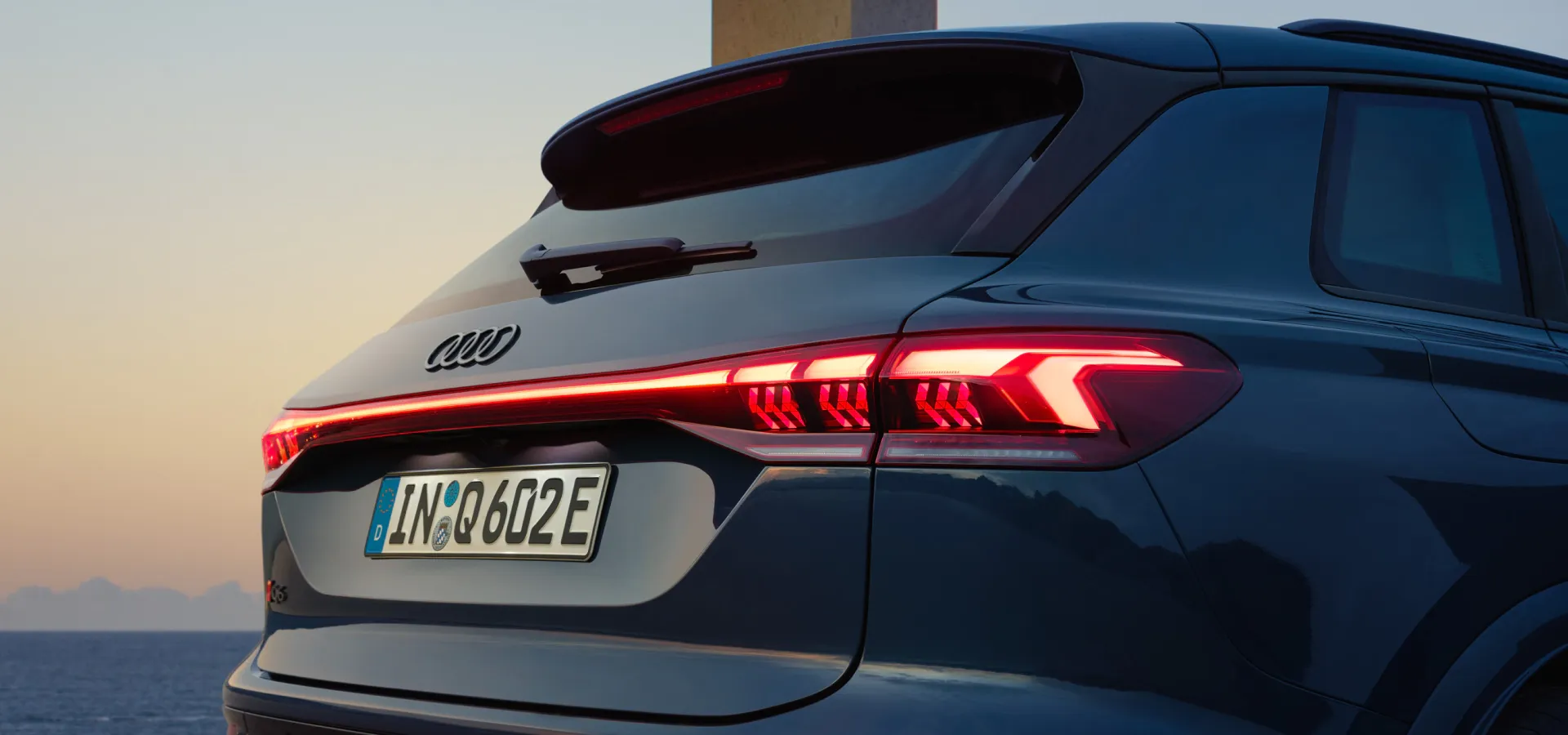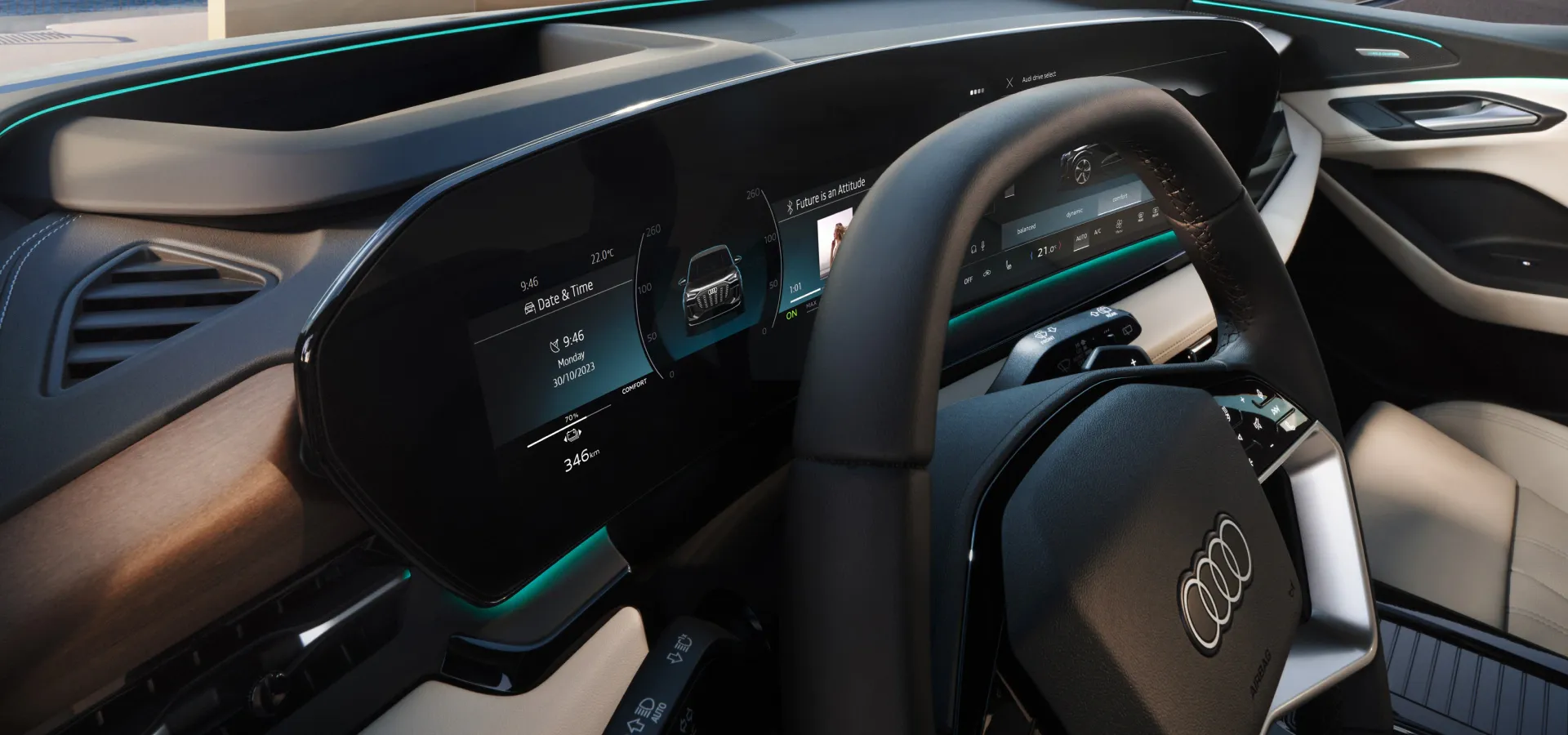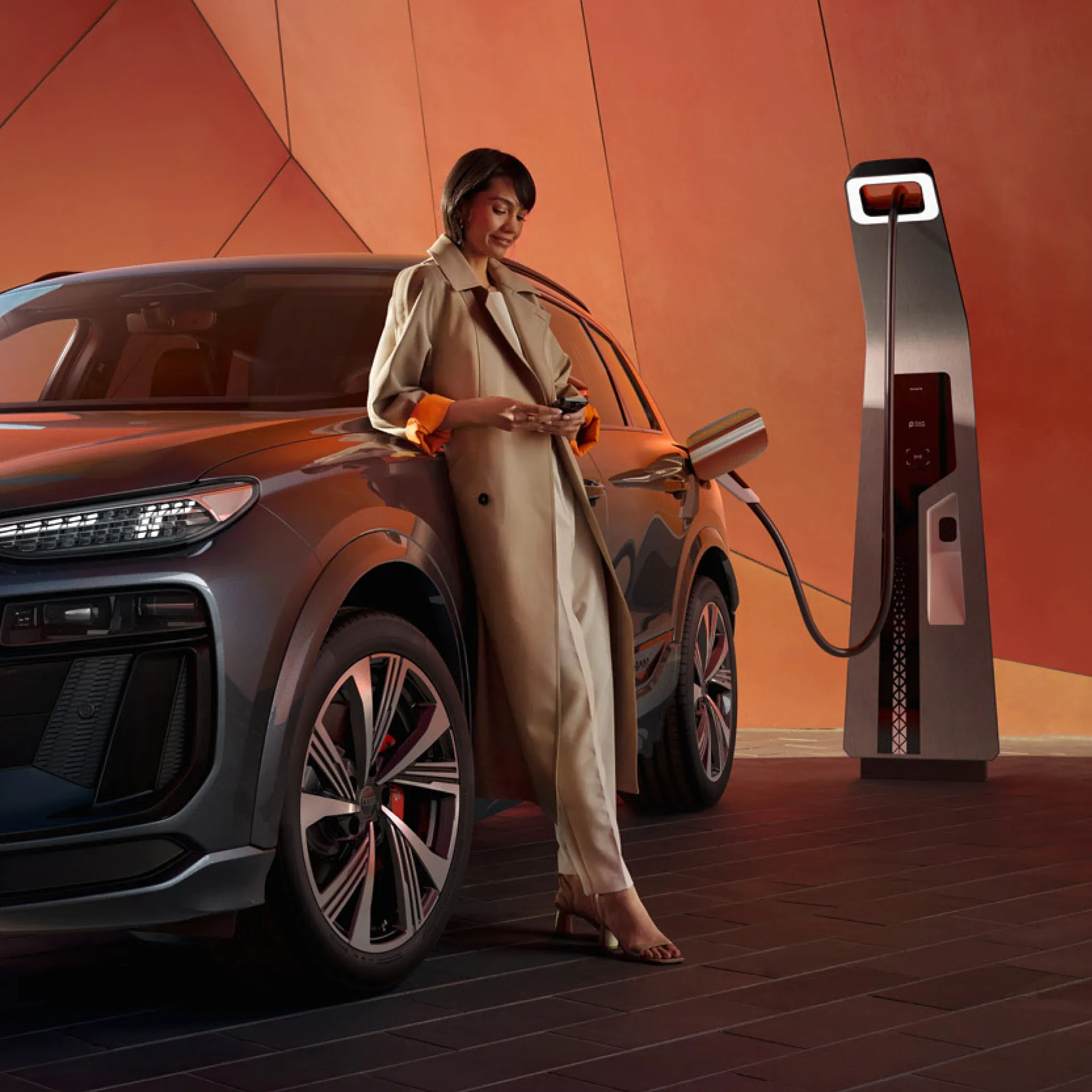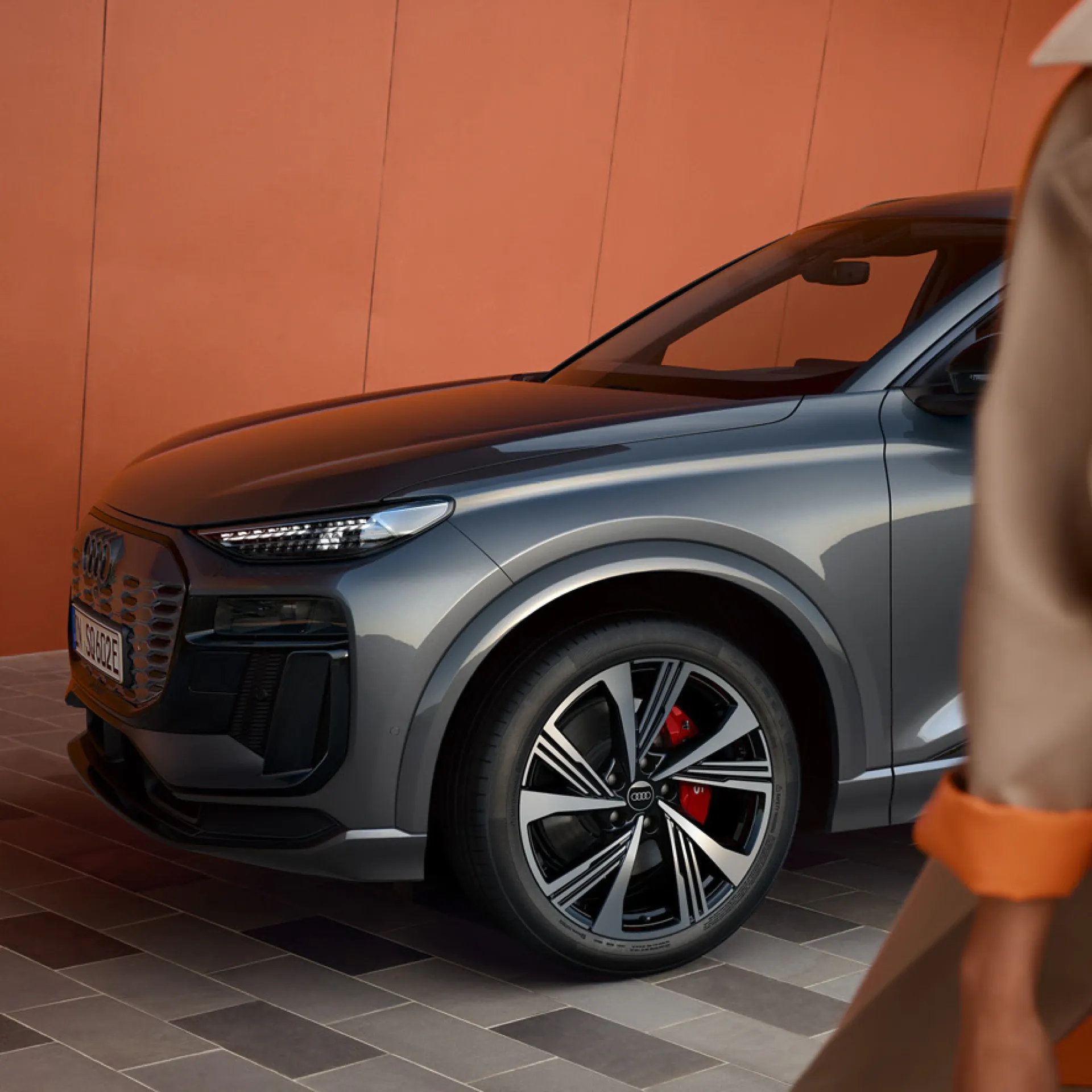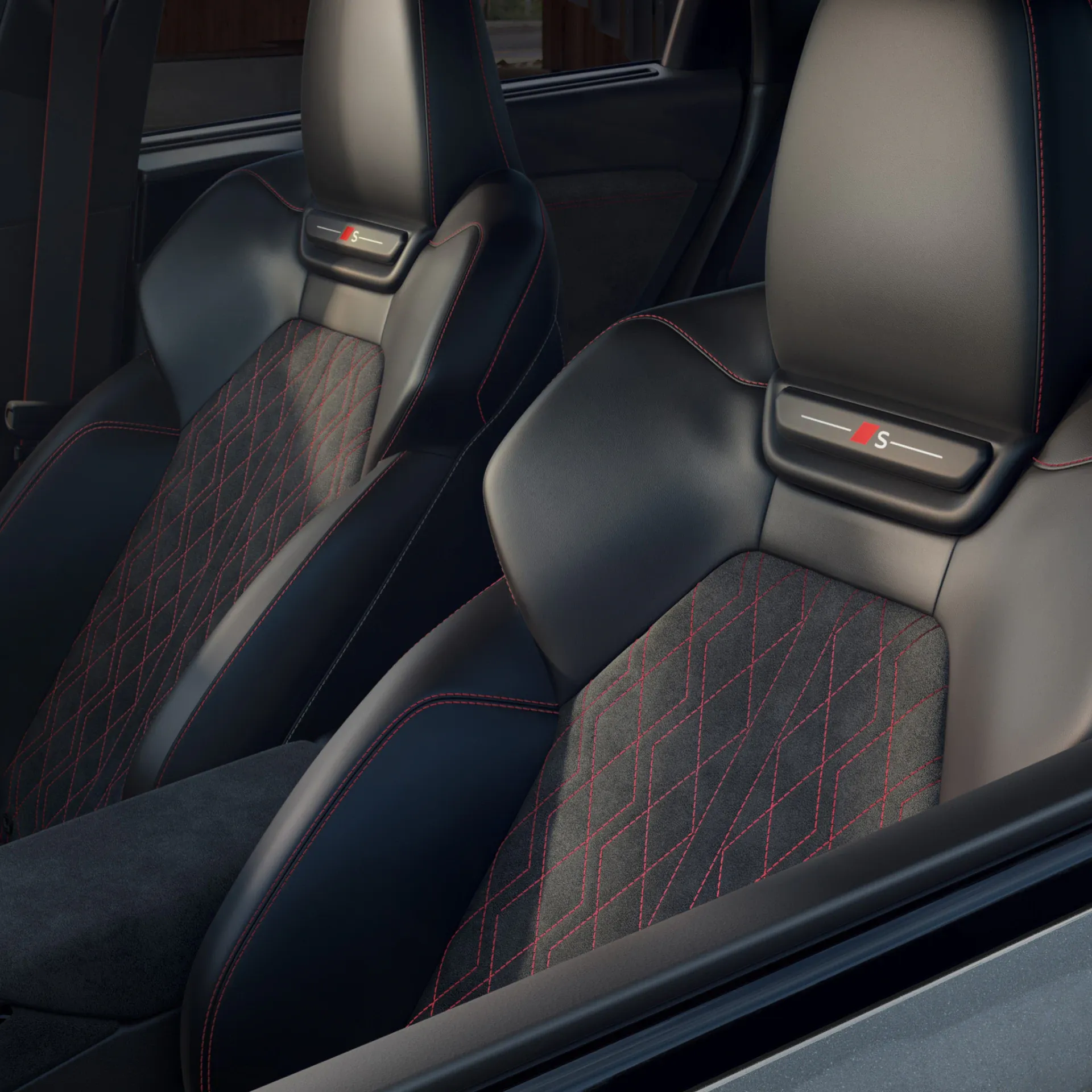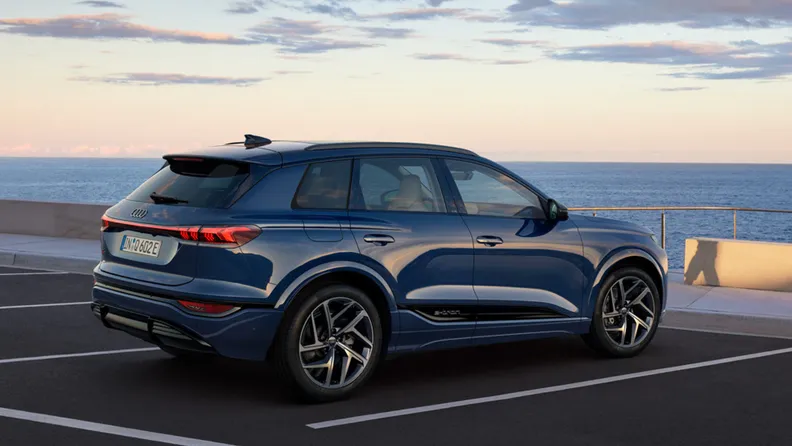Audi Q6 e-tron: the new benchmark for “Vorsprung durch Technik”
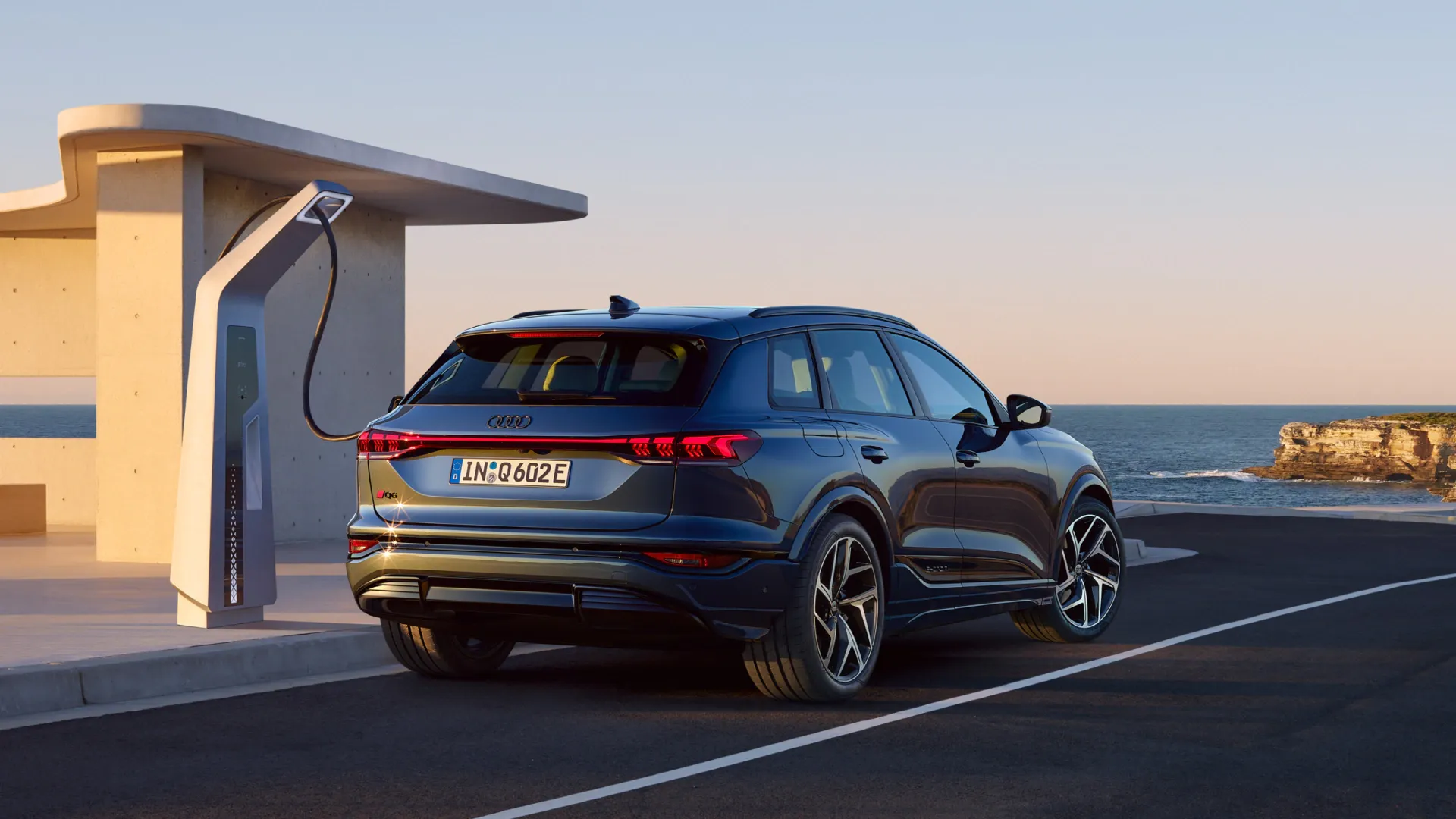
New electric car platform, new high-voltage battery, new electronic architecture
With the Q6 e-tron range, Audi is presenting the first production vehicle based on the PPE, the newly designed platform specifically for battery electric vehicles. The technical components of Premium Platform Electric – which was designed in partnership with Porsche – have been tailored to the particular requirements of electric vehicles and arranged according to functional aspects, so allowing optimum use to be made of an electric vehicle’s advantages when it comes to vehicle geometry, available space and weight distribution.
The PPE also offers space for a completely redeveloped high-voltage battery. The battery in both model variants, the Audi Q6 e-tron quattro¹ and Audi SQ6 e-tron², boasts a gross storage capacity of 100 kWh (net 94.9 kWh). It consists of just 12 modules with a total of 180 cells. The 15 cells per module are connected in series. For comparison: the battery in the Audi Q8 e-tron comprises 36 modules and 432 cells.
Fewer modules means that the battery requires less installation space, is lighter and can be better integrated into the vehicle’s crash structure and cooling system. A cooling plate integrated into the battery casing also ensures uniform transfer of heat – and thus near-optimal battery conditions. The Audi Q6 e-tron’s protective side sills are attached not to the battery but to the body, ensuring added stability. The underfloor protection in fibre composite material is also new. This construction reduces the weight, protects the lithium-ion battery from damage and improves the battery’s thermal isolation from its surroundings. This means that the high-voltage battery in the Audi Q6 e-tron can cool or heat more efficiently.
The lithium-ion battery, with its total gross capacity of 100 kWh (94.9 net), offers an overall range of up to 625 kilometres. Thanks to 800-volt technology and a maximum charging capacity of 270 kW, the Audi Q6 e-tron enables short charging stops. At appropriate charging points (HPCs), electricity for a range of more than 255 kilometres can thus be charged in ten minutes. The state of charge (SoC) can be increased from 10 to 80 per cent in around 21 minutes.
For the first time in an Audi model, the Audi Q6 e-tron now also boasts the new electronic architecture E³ 1.2, which was designed with CARIAD, the software powerhouse from the Volkswagen Group. The name E³ stands for end-to-end electronic architecture. A standardised electronic-architecture framework based on a new domain computer structure with five high-performance computers operates all vehicle functions – from infotainment and driving functions to semi-automated driving in later evolutionary stages. The E³ 1.2 electronic architecture forms the basis for a seamless digital experience in the interior, facilitates future innovations and represents the next step in the digitalisation of Audi’s model portfolio.
High-voltage battery
100
kWh
gross storage capacity (net 94.9 kWh) is the capacity of the battery in the Audi Q6 e-tron and Audi SQ6 e-tron².
Range
625
km
you can travel in the Audi Q6 e-tron before it requires recharging.
Charging performance
270
kW
quick-charging performance can be achieved with the Audi Q6 e-tron and Audi SQ6 e-tron² at HPC stations.
New design philosophy
The Audi Q6 e-tron’s PPE premiere marks the start for a new generation of Audi interior design. The interior of the Audi Q6 e-tron is aligned more consistently than ever with the needs of its users. The digital stage, with the Audi MMI panoramic display and MMI passenger display, ensures precise structures and visual clarity. The three-dimensional, high-contrast interior set-up consciously places elements in the fore- or background, thus creating three-dimensional spatial architecture that is tailored to passengers both in its design and ergonomics.
The interior accentuates a homely feel. The “Softwrap” extends from the doors, throughout the cockpit and into the central console, thereby creating a consistent and all-enveloping feel. Areas with a focus on comfort are highlighted with their generous dimensions and soft materials, some of which are manufactured with recycled components. By contrast, the precisely marked operating areas in premium high-gloss black promote clarity when interacting with the vehicle.
Thanks to the new Premium Platform Electric, developed specifically for electric vehicles, the Audi Q6 e-tron is also extremely spacious and highly practical. The additional legroom, convenient access to the rear seats and high degree of comfort on the middle rear seat are typical of an electric vehicle without central tunnel. The boot space offers 526 litres of storage. If the rear seats are laid flat, the loading area increases to up to 1,529 litres. The rear seats can be folded separately (40:20:40). There is also an additional 64 litres in the “frunk” (front trunk) under the bonnet – handy for storing smaller travel bags, for instance.
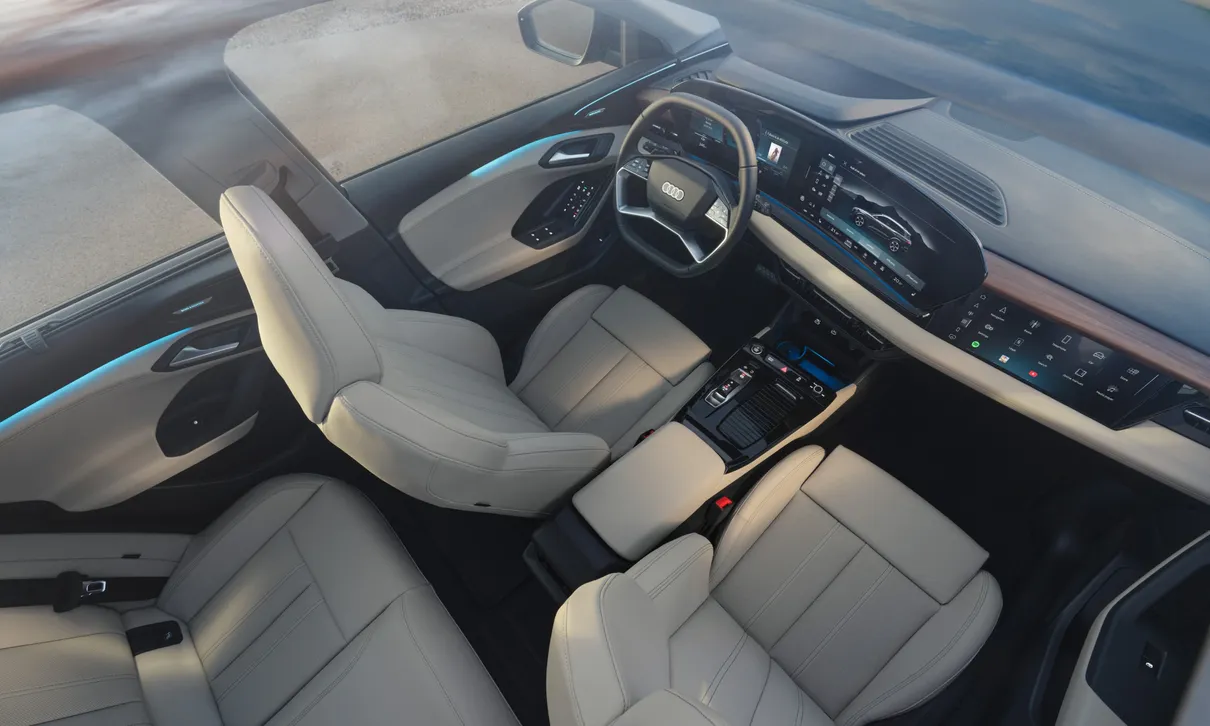
The e-performance of the Audi SQ6 e-tron²
Power
380
kW
can be temporarily provided by the Audi SQ6 e-tron² in "Launch Control"³ mode.
Dynamism
4.3
s
the Audi SQ6 e-tron² needs to accelerate from 0 to 100 km/h (with Launch Control³).
Speed
21
min.
it takes for the state of charge (SoC)⁴ in the Audi SQ6 e-tron² to increase from 10 to 80 per cent.
New lighting technology
With the Q6 e-tron, Audi is not just beginning a new chapter in electric mobility, but also in a vital element of its DNA: lighting technology. With the global innovation of the active digital light signature, the Audi Q6 e-tron is shaping a new era with unique design and an aesthetic that could only come from Audi. As part of the optional digital light signature package, the digital light signature brings together signature and movement in the headlights and rear lights, lending a new, uniquely vibrant character.
With a total of up to eight optional digital light signatures in the newly designed daytime driving light for the Matrix LED headlights and digital OLED rear lights 2.0, customers can tailor the appearance of their Audi Q6 e-tron like never before. This is possible via the MMI and, for the first time, the myAudi app. The digital light signatures can also be added after the vehicle has been purchased.
The second generation in innovative digital OLED technology not only characterises the appearance of new Audi models, but also increases their functional scope many times over. This is also beneficial when it comes to road safety, as the communication light in the digital OLED rear light 2.0 impressively demonstrates. For the first time, the digital OLED rear lights can communicate Car-to-X with their immediate surroundings in a targeted way.
The number of segments per digital OLED panel has risen compared with the first generation from six to 60 segments. In total, the rear lights in the Audi Q6 e-tron use six OLED panels with 360 segments. The ongoing increase in segments per digital OLED panel facilitates the future development of rear lights into a display that will further improve Car-to-X communication – and with it, road safety.
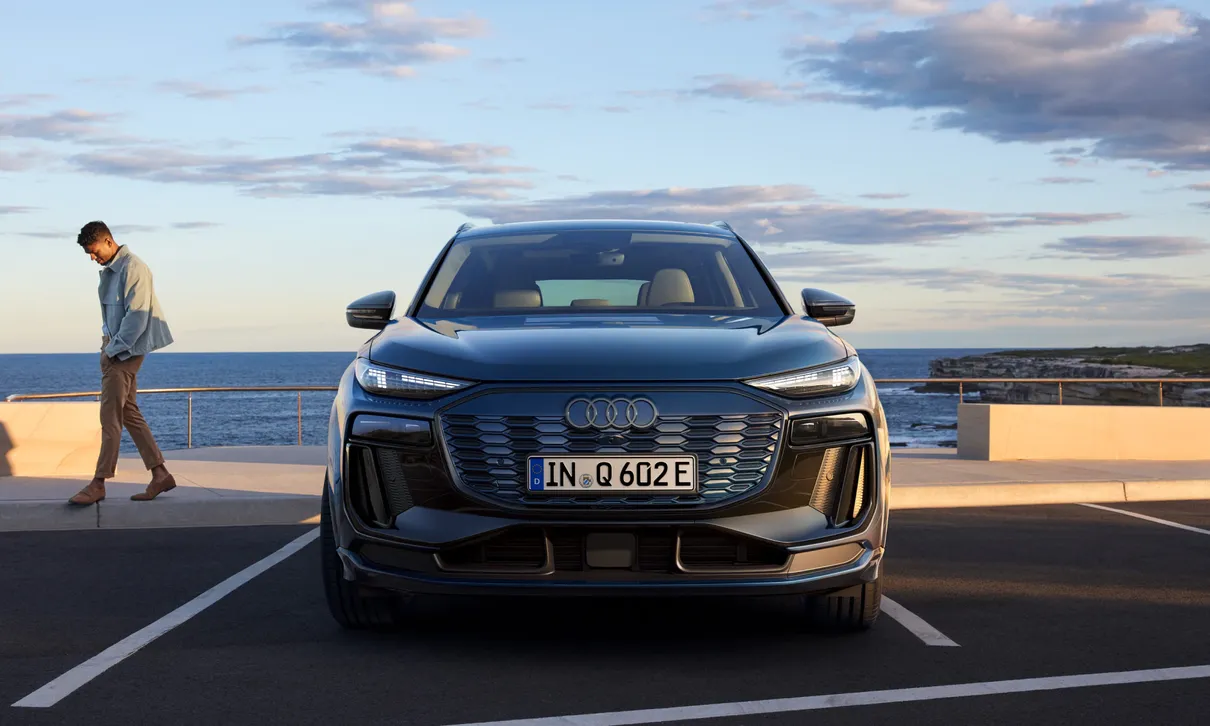
¹Energy consumption (combined): 19.6–17.0 kWh/100 km; CO₂ emissions (combined): 0 g/km; CO₂ emission class: A.
²Energy consumption (combined): 18.4–17.5 kWh/100 km; CO₂ emissions (combined): 0 g/km; CO₂ emission class: A.
³Due to underlying physical constraints, repetition of the performance in Launch Control mode is achievable for the acceleration value provided, but not continually in succession.
⁴The battery’s charging duration and maximum DC charging performance at HPC (high-power charging) points were determined as per DIN 70080 and may vary depending on a number of factors, such as the ambient and battery temperature, the use of other country-specific connectors, use of the preconditioning function (e.g. remote vehicle air conditioning), available capacity at the charging point, the state of charge and the age of the battery. Charging performance decreases as state of charge increases. Loss of charge is taken into account.
¹Energy consumption (combined): 19.6–17.0 kWh/100 km; CO₂ emissions (combined): 0 g/km; CO₂ emission class: A.
²Energy consumption (combined): 18.4–17.5 kWh/100 km; CO₂ emissions (combined): 0 g/km; CO₂ emission class: A.
³Due to underlying physical constraints, repetition of the performance in Launch Control mode is achievable for the acceleration value provided, but not continually in succession.
⁴The battery’s charging duration and maximum DC charging performance at HPC (high-power charging) points were determined as per DIN 70080 and may vary depending on a number of factors, such as the ambient and battery temperature, the use of other country-specific connectors, use of the preconditioning function (e.g. remote vehicle air conditioning), available capacity at the charging point, the state of charge and the age of the battery. Charging performance decreases as state of charge increases. Loss of charge is taken into account.
